Strategies for Elevating Workforce Potential Through Thoughtful Training
Adapting and thriving in a dynamic business environment requires a deliberate focus on workforce development. Companies that invest in meaningful training initiatives empower employees with tools to excel and advance organizational goals. Targeted programs address unique skill gaps, aligning employee capabilities with evolving industry demands. Effective training creates an engaged workforce ready to tackle complex challenges. A strong emphasis on growth cultivates a proactive culture that drives sustained progress.
Unveiling Future Leaders: The Role of Succession Planning
Identifying potential leaders within your organization is key to effective succession planning. By providing opportunities for employees to demonstrate leadership in smaller settings, you prepare them for larger roles. This not only meets immediate leadership needs but also aligns with your strategic goals. If you notice mistrust or low productivity, it might signal a disconnect between new leaders and their teams, prompting a reevaluation of your strategies. A well-structured succession plan ensures smooth leadership transitions and preserves valuable knowledge, fostering a culture of continuous learning.
The True Cost of Employee Training: Investment or Expense?
Deciding whether to invest in employee training involves weighing the benefits against the costs of underperformance or high turnover. Training can significantly boost engagement, with many workers believing it improves job performance and confidence. Conversely, lack of training can lead to disengagement, a major factor in wasted potential and turnover. The financial impact of turnover is substantial, with costs reaching tens of thousands in lost productivity and recruitment expenses. Thus, investing in training boosts morale and skills while mitigating costly turnover, making it a strategic investment.
Maximizing On-Site Training with Comprehensive Documents
When you conduct on-site training, having detailed training documents is essential. These documents should include step-by-step instructions, visuals, and examples tailored to your team’s specific needs. Saving these materials as PDFs ensures consistent formatting across devices. If updates are needed, you can easily convert a PDF into a Word document using an online conversion tool, making edits seamless. By investing in well-structured training documents, you enhance the learning experience and contribute to your team’s long-term success. Check out this resource for more information.
The Strategic Advantage of Certification Programs
Certification programs validate expertise and strengthen professional credibility, setting individuals apart in competitive fields. They reflect dedication to maintaining high standards and staying current in one's industry. Fields such as healthcare and technology often rely on certifications to ensure qualified professionals meet established benchmarks. This recognition enhances employability and can lead to broader career prospects. Selecting a program that aligns with career goals is essential for sustained growth.
Enhancing Training Programs for Sustained ROI
To ensure your training programs deliver a strong return on investment, regular monitoring and refinement are crucial. By integrating feedback channels, you gather insights into how employees perceive and benefit from training, allowing for content adjustments. This dynamic approach ensures training evolves with organizational needs, leading to higher engagement and retention. Viewing ROI as a measure of skill enhancement and productivity growth helps align training with business goals, transforming it into a powerful tool for operational excellence.
Ensuring Your Team’s Skills Meet Industry Standards
Maintaining a competitive edge requires benchmarking your team’s skills against industry standards. By analyzing metrics like revenue growth and efficiency, you can identify areas for improvement. Comparing your team’s performance with industry leaders helps pinpoint skill gaps and adopt best practices. Implementing targeted training based on these insights ensures your team remains competitive. Regularly updating benchmarks and strategies keeps you ahead in a rapidly evolving landscape.
Boosting Customer Satisfaction Through Enhanced Staff Training
Investing in comprehensive staff training can elevate customer satisfaction and loyalty. When employees are equipped with personalized service skills and emotional intelligence, they better meet customer expectations. This enhances the shopping experience and fosters trust with the brand. Integrating sustainability practices into training aligns staff with customer values, differentiating your business in a competitive market. Well-trained staff lead to improved sales and positive feedback, driving long-term growth.
Maximizing Skill Development Through Expert Partnerships
Partnering with specialized training providers or industry experts sharpens your team’s advanced skills and addresses precise needs. Customizing training ensures employees gain relevant, up-to-date competencies for their roles. Modern tools like virtual reality and gamification make learning interactive and adaptable to varied preferences. Leveraging expert guidance improves both efficiency and quality in skill development. These collaborations build a versatile and capable workforce ready for evolving challenges.
Investing in staff training drives growth and strengthens organizational adaptability. Aligning training with business goals creates a skilled workforce eager to support success. Continuous learning ensures employees stay agile amid evolving industry demands. A well-trained team is better equipped to handle challenges and seize opportunities. Prioritizing education fosters resilience and sustained progress.
Discover how the Chamber of Greater Easthampton can empower your business with resources, connections, and opportunities for growth in our vibrant community!
